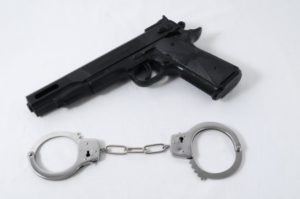 The Appellate Division continued in relevant part: The Model Charge contains four paragraphs explaining the third element of the crime. The jury never heard or saw any of those instructions. It is beyond debate that “the court must always charge on the elements of the crime.” State v. Vick (1989). “Proper explanation of the elements of a crime is especially crucial to the satisfaction of a criminal defendant’s due process rights.” State v. Burgess (1998).
The Appellate Division continued in relevant part: The Model Charge contains four paragraphs explaining the third element of the crime. The jury never heard or saw any of those instructions. It is beyond debate that “the court must always charge on the elements of the crime.” State v. Vick (1989). “Proper explanation of the elements of a crime is especially crucial to the satisfaction of a criminal defendant’s due process rights.” State v. Burgess (1998).
Defendant’s second argument alleging error in the unlawful purpose charge convinces us further that reversal is required. Defense counsel requested the judge include that portion of the Model Charge discussing the use of a firearm for a protective purpose. Such a finding by the jury may negate the crime’s requisite mental state that a defendant possessed the firearm for an unlawful purpose. See Model Charge at 6. The judge refused, concluding the jury could not find defendant’s return to Danielle’s house with a weapon was for the purpose to protect himself or his property. At one point, the judge said the facts did not support the charge because such a belief by defendant was “unreasonable.”
However, the Model Charge clearly explains the difference between self-defense, which requires both an honest and reasonable belief in the need to use force, and the use of a weapon for a protective purpose, which only requires an honest belief, not a reasonable one. See State v. Williams (2001) (explaining the difference between the two concepts).
Here, defendant fled from an earlier physical altercation with Davontae. The jury could believe Danielle’s testimony that defendant never intended to fight her son. In the process, Davontae took defendant’s cell phone and refused to return it. The jury could believe defendant brought the weapon with him when he returned to protect himself as he tried to get the phone back. Certainly, there was sufficient evidence in the case to support the protective purpose instructions in the Model Charge. This error further supports our conclusion that defendant’s conviction of the unlawful purpose charge must be reversed.
We hasten to add that reversal of defendant’s convictions on the two weapons offenses do not affect his conviction for aggravated manslaughter, which we affirm.
Aggravated manslaughter requires a ten-to-thirty year prison sentence. It is unlikely that the State will move to re-try the relatively minor weapons charges under the circumstances.
